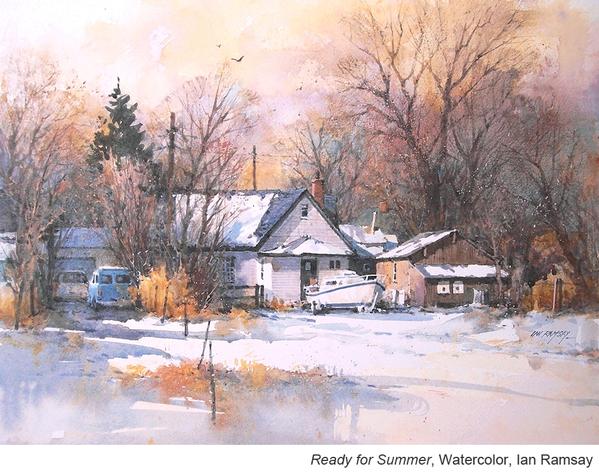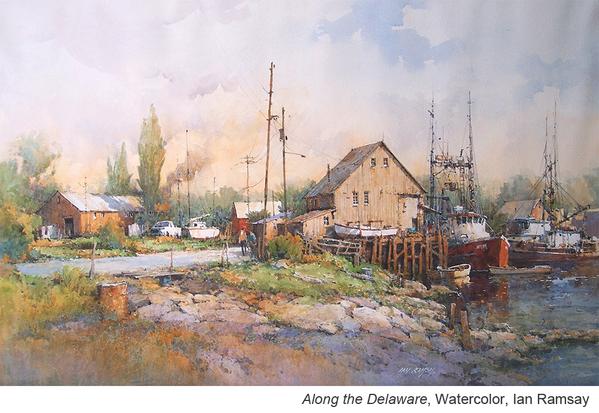
“I like to have a lot going on in a painting,” says Ian Ramsay. “I define the focal point mainly with a sense of light offset by dark values that heighten the sense of light. Sometimes I will also use an accent color for this purpose, but the main trick is always contrasting value. More subdued detail is added in the areas beyond the focal point in order to make the supporting cast interesting, but it is purposefully kept subordinate to the star attraction. I love detail, but I do work hard to only include that which enhances the painting. Believe it or not, I do not want the painting to be too complicated, only interesting.

“I contrast color to create mood, and use value contrast to define the subject and direct the viewer’s eye. Objects need a variety of shapes and sizes or they become boring and make the painting uninteresting. Contrasting elements of all kinds adds to the depth of a painting and draws the viewer down the road into a building or across the harbor to the distant shore. Without contrast there is no excitement to draw you across the room to even look at a painting. In my mind, it is the most important element to keep in mind while painting.

“When I view the work of other watercolor artists that inspire me, I marvel at the simple purity of brushstrokes, the strength and comfort of the composition, the skill of the drawing, and the compatibility of the color. I strive to understand how they are able to convey so much with fewer brushstrokes than I tend to use.
“It is my goal to achieve a sense of interest and complexity in a simpler way. I am, as I suppose most artists are, attracted to those works that I find interesting in terms of a subject that I would like to paint or perhaps have painted. I study these works and learn from them, and I try to incorporate those approaches and techniques into my work.

“My style is quite unique to my art but I have enjoyed and subconsciously borrowed the ideas and techniques of many and have adapted them to my own paintings — never copied, just learned — it is impossible not to do that!”

ADVICE TO BEGINNING WATERCOLOR ARTISTS
“I believe that once an aspiring artist has learned the basics of drawing and painting, he or she must become their own best teacher. We have goals as to what we want to accomplish and if we don’t achieve them then we need to evaluate the image and ask ourselves why we have not succeeded. We know what is going on in our own heads; an instructor does not.

“Put your paintings, success or failure, in front of you. Decide what you like about what you have done and what you do not — and ask yourself why. Study other artists’ work and determine exactly what you like about it. Try to figure out how they did it and how you may adapt that approach to your work— not copying but learning. At that point you are your own teacher. I frustrate over my own mistakes and inadequacies as a painter every day and I do my best to learn from them. I constantly look at what I believe is my best work and try to learn from it. It is impossible to recreate a successful previously done painting but it is possible to learn from it.”

Ian Ramsay was born in Farnborough, Kent, England. He spent his early years in Britain and Canada, and eventually settled in the United States. He received a degree in architecture at the University of Utah and is a licensed architect. In 1979 Ian left architecture to become a full time watercolor artist. Since that time he has traveled and painted extensively. His work has been exhibited all over the US, Japan and Britain.








Wow, incredible paintings and such great advice!!
Wonderful article and amazing paintings. Thank you for this great advice!
V practical advise